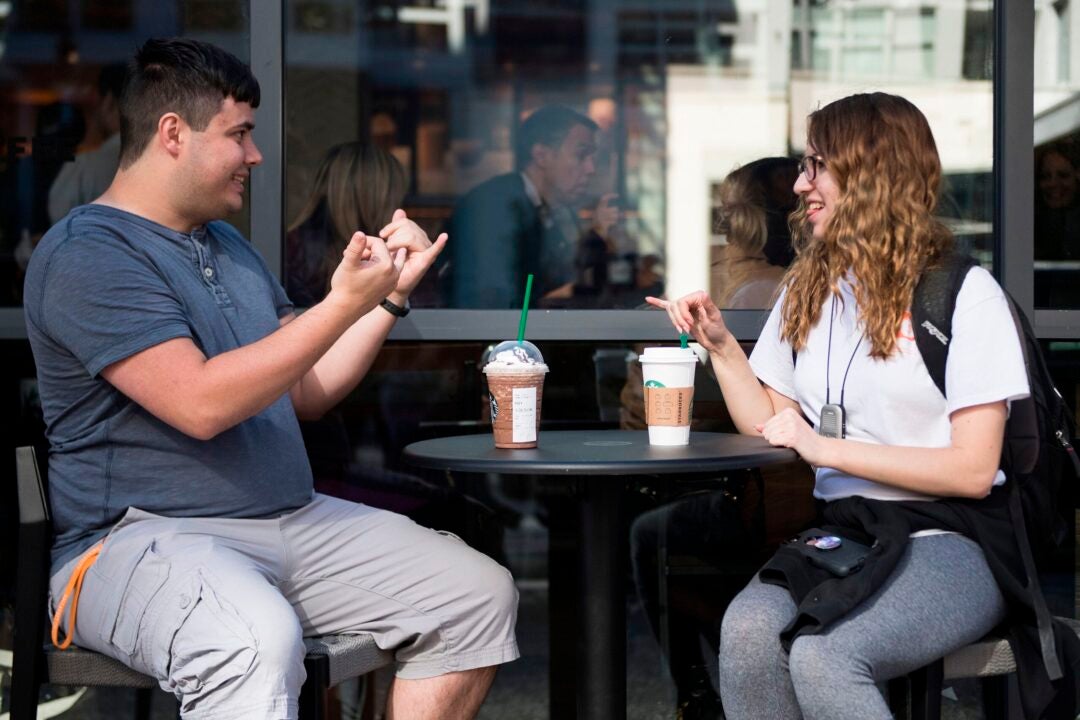September is Deaf Awareness Month aims to raise awareness and understanding
INDIANAPOLIS (WISH) — Every day, we encounter different obstacles, and for some, these obstacles make it harder for them to hear the world around them.
September is recognized as Deaf Awareness Month, which aims to raise awareness and promote better communication practices to support the needs of people who are deaf or hard of hearing.
I spoke with Carole Cox, LMFT, with Thriveworks about ways to support and better understand members in this community.
She is a licensed marriage and family therapist specializing in anxiety and stress. Cox also has extensive experience working with the deaf/hard-of-hearing community.
Cox says there are unique mental health challenges that impact the Deaf community.
“People with a hearing impairment or deafness who have symptoms of disorders of mood such as anxiety, depression, or Bipolar disorder are frequently under diagnosed or misdiagnosed. There are not enough trained signing therapists or experienced interpreters, and some people in the deaf community are reluctant to utilize interpreters due to HIPPA, embarrassment regarding sharing personal information using a non-mental health interpreter, and/or issues with translation with a therapist who does not sign where an interpreter is being used. This can create confusion and frustration and therefore making the patient less likely to attempt to access mental health services.”
Cox added: “People in the Deaf community may display feelings differently and more nonverbally than their hearing counterparts and feel misunderstood: there are few recognized signs that adequately describe moods. Members of the Deaf community may use ways of communicating that can appear aggressive to others who are not hearing impaired, such as pounding on the floor or a desk to get someone’s attention.”
What accessibility challenges to members of the deaf or hard of hearing community face when seeking mental health services?
“Depending on where a person with a hearing impairment goes for help, there might be barriers to having the right technology to utilize help: For example, some people have TTY machines, which print out a conversation if there is no access to a computer/Zoom, or inability to get to an in-person session. This device helps in providing services to the hearing impaired,” Cox said. “There are also barriers to finding available therapists who are fluent in signing, and who also understand the culture of the deaf community beyond just knowing how to sign.”
Why is it important that more therapists become trained in ASL?
“ASL is a fluid and ever changing language: most people with hearing impairments or deafness can read lips, but accuracy can be less than 40% in some cases and there is miscommunication. ASL has specific nuances and specific signs that communicate basic verbs and nouns, feelings can be a bit more complex and require a series of signs to interpret and understand.
“A therapist who is working with the deaf and hearing impaired should also be trained and well-versed in reading and understanding nonverbal body language and tone of voice if a person is able to speak. A therapist should also be very well versed in the culture of the deaf community,” Cox said.
What does a therapy session conducted in ASL look like – are there any major differences apart from communication style?
“I have conducted Zoom sessions in ASL, as well as face to face sessions using finger spelling and also signing: the challenges with Telehealth are poor lighting and not being able to adequately see the non verbal facial expressions or hear tone of voice clearly. Also, some people who are deaf may not be proficient in signing,” said Cox. “It is vitally important to observe the parts of communication that are beyond the words we say: if a person is nonverbal: facial expressions, body language, and posture are all indicative of how a person is communicating feelings and emotions.”
“I have also enlisted the help, with release of information consent forms, for family members to participate in sessions who are well versed with the nuances of a deaf person’s communication patterns: this was helpful for me when I worked with a couple where the husband was hearing and his wife was deaf,” said Cox.
Cox added:
“An additional difference is the extra time needed to plan for sessions: if there is an interpreter, additional time is needed for this person to relay the information to the therapist and vice versa. These types of sessions require more patience, more compassion, and a deeper understanding of the culture of the deaf community and how it might differ from the culture of the hearing.
“It is also important for a therapist to understand the culture of a deaf client. People who are deaf may identify as having a disability; they have a set of social beliefs, values, history, narratives and accounts about their own stories about their hearing impairments.”
There are many ways to support members of this community, it all starts with empathy and understanding. For more information, click here.



